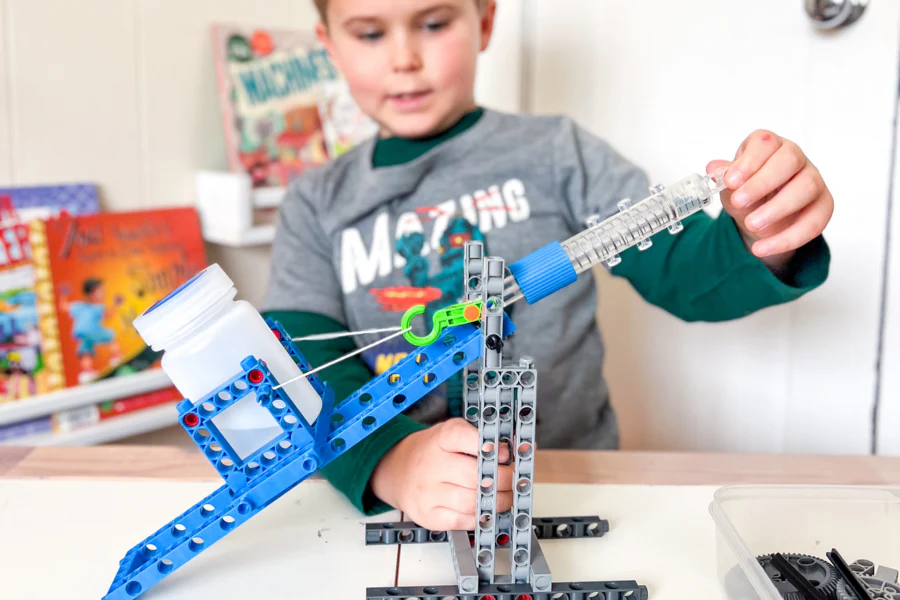Gears and levers are among the simplest machines ever invented, yet they power much of the world around us. From bicycles and watches to cranes and engines, these basic mechanisms allow us to lift, rotate, and transfer force with ease. The beauty of simple machines is that they follow a few core principles—but their applications are nearly limitless.
You don’t need a lab or a workshop to understand how gears and levers work. With a little creativity and some common household items, you can explore the mechanical world right at your kitchen table. DIY projects focused on gears and levers not only offer hands-on fun but also give you a deeper appreciation of physics and engineering concepts in action.
Why Build Simple Machines at Home?
Exploring simple machines like gears and levers through DIY projects helps make abstract science ideas concrete. Kids and adults alike benefit from seeing how effort, load, and motion interact. When you build your own gear train or lever arm, you immediately grasp concepts like torque, mechanical advantage, and rotational motion in ways that books alone can’t deliver.
These home projects also develop critical thinking, spatial reasoning, and problem-solving skills. They’re great for STEM education, parent-child activities, or just anyone curious about how things work. Plus, they’re affordable—you can repurpose cardboard, skewers, bottle caps, or even utensils into functioning models that demonstrate real mechanical behavior.
Getting Started with Gears
A gear is a rotating machine part with teeth that mesh with another toothed part to transmit torque. When one gear turns, it causes the next one to turn as well—often at a different speed or direction. You can create gears at home using cardboard, bottle caps, or plastic lids by cutting out evenly spaced teeth and mounting them on skewers or pencils as axles.
Start simple by building two gears that mesh. Spin one and observe how the second rotates in the opposite direction. Add a third gear and see how it reverses direction again. You’ll quickly see how gears can control direction, speed, and power.
You can also experiment with different gear sizes to create a gear ratio. A large gear driving a smaller one increases speed but reduces force, while the reverse increases torque and reduces speed. These principles are used in everything from wind-up toys to industrial machines.
Building Basic Lever Systems
Levers are equally straightforward but incredibly effective. A lever consists of a rigid beam that pivots on a fulcrum. By applying force on one end, you can move a load on the other—depending on the relative distances from the pivot.
To build a simple lever at home, use a wooden ruler or a stiff strip of cardboard as the beam. A pencil, eraser, or even a bottle cap can serve as the fulcrum. Adjust the position of the fulcrum and observe how the force required to lift a weight changes. The closer the load is to the fulcrum, the easier it becomes to lift.
Try lifting small objects like coins or erasers using different fulcrum positions. By testing different load-to-effort distances, you’ll see firsthand how mechanical advantage works. This helps reinforce real-world examples of levers—like seesaws, crowbars, and scissors.
Combining Gears and Levers in One Project
Once you’ve mastered the basics, try combining gears and levers into a single model. A hand-cranked lifting mechanism is a great example. Use a lever arm to activate a gear system that winds a spool and lifts a small weight. This illustrates how compound machines work, blending multiple simple machines into a single, efficient system.
You can even build a DIY crane using a lever-based arm and a gear-driven winch. As you experiment, you’ll start seeing these simple systems in everything from fishing reels to garage door openers.
By combining these mechanisms, you build not only a fun device but also a working model of the same mechanical principles that power real-world tools and technologies.
Simple Machine Project Summary
Here’s a quick chart that outlines basic DIY gear and lever projects, their mechanical focus, and what you need to make them.
| Project Name | Concept Demonstrated | Common Materials Needed |
|---|---|---|
| Gear Train (2–3 gears) | Direction and speed control | Cardboard, bottle caps, skewers, glue |
| Lever Arm | Mechanical advantage, force | Ruler or cardboard strip, pencil, coins |
| Gear Ratio Demonstrator | Torque vs. speed | Different-sized lids, axles, baseboard |
| Balance Scale | Fulcrum movement | Wooden sticks, string, small cups |
| Crank-Lift Mechanism | Combined motion systems | Cardboard gears, lever arm, thread spool |
| DIY Mini Crane | Lift using lever + gear | Popsicle sticks, pulley, gears, glue |
These ideas are flexible and can be adjusted based on available materials or your interest level.
Frequently Asked Questions
Do I need any special tools to build gear and lever models at home?
Not at all. Scissors, glue, a ruler, and common crafting supplies like cardboard or sticks are enough. A hot glue gun can be helpful for stability, but even tape works in most cases.
Can I make gears from cardboard?
Yes! Cardboard is ideal for beginner models. You can cut out circles and add notches as teeth. Make sure the teeth are evenly spaced, or they may jam when rotating.
What is a gear ratio, and why does it matter?
A gear ratio describes the relationship between two meshing gears based on their size or number of teeth. It determines how fast one gear turns in relation to the other and affects torque and speed.
How can I make a working model of a lever?
Use a flat object like a ruler or strip of cardboard as the beam and place it over a round object like a pencil to act as the fulcrum. Place a small weight on one end and press down on the other to lift it.
Are these projects suitable for children?
Yes, with adult supervision. They’re great for kids age 7 and up and serve as excellent STEM learning activities. Just make sure any cutting or gluing is done safely.
Can I combine gears and levers in one build?
Absolutely. A great way to challenge yourself is by building systems that use both—like a crane or a catapult with a geared wind-up mechanism. This helps you explore how machines work together.

